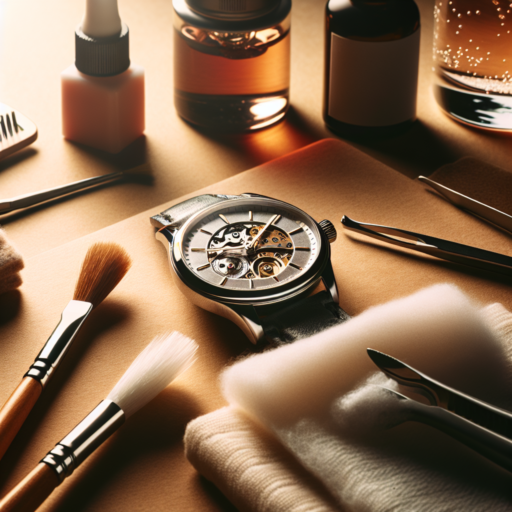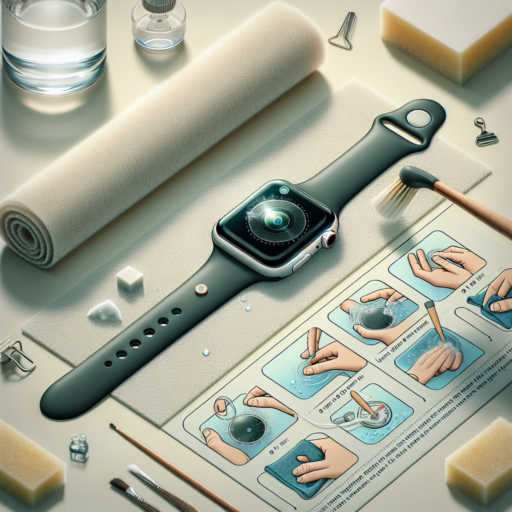What can I use to clean a watch face?
Cleaning a watch face is essential for maintaining its appearance and functionality. The key is to select a cleaning method that is safe and effective for your specific watch type. Gentle, non-abrasive cleaners are usually the safest option for most materials, including glass, crystal, and even touchscreen surfaces.
Recommended Cleaning Agents
For everyday cleaning, a mixture of mild soap and water can work wonders. Ensure the soap is gentle and free of any harsh chemicals that could damage the watch face. Applying the solution with a soft, lint-free cloth can help prevent scratches. For more stubborn dirt or grime, using a small amount of isopropyl alcohol on a microfiber cloth can be effective. However, it’s crucial to avoid using alcohol-based cleaners on watches with acrylic faces, as they can cause clouding or cracking.
Tools for Cleaning a Watch Face
- Microfiber Cloths: Ideal for removing fingerprints and smudges without scratching the surface.
- Soft-Bristled Toothbrush: Useful for gently scrubbing away debris from hard-to-reach places without causing damage.
- Q-Tips or Cotton Swabs: Perfect for detailed cleaning around the watch bezel and other intricate parts of the watch face.
When cleaning your watch face, always follow the manufacturer’s guidance and consider the material of your watch to avoid causing harm. Regular maintenance and careful cleaning can extend the life and beauty of your watch, ensuring it continues to function accurately and look its best.
How do you clean a watch screen?
Cleaning a watch screen is crucial for maintaining its clarity and functionality. Over time, fingerprints, dust, and grime can accumulate, undermining the aesthetic appeal and visibility of your device. Simple, regular maintenance can keep your watch looking its best and ensure it remains a reliable timekeeper. When it comes to cleaning the screen, gentle care is key to preventing any scratches or damage.
Materials You’ll Need
- Microfiber cloth
- Water or a mild, screen-safe cleaning solution
- Air blower (optional)
Start by using an air blower to remove any loose particles or dust from the surface. This step helps to avoid scratching the screen during the cleaning process. If you don’t have an air blower, you can gently shake or tap the watch to dislodge these particles. Next, dampen the microfiber cloth with a bit of water or a cleaning solution specifically designed for screens. It’s important to avoid using paper towels, rough fabrics, or alcohol-based cleaners, as these can damage the screen.
Rub the screen gently with the dampened cloth in a circular motion, ensuring not to apply too much pressure. For stubborn marks or grime, you may need to apply a small amount of cleaning solution directly onto the cloth and repeat the gentle rubbing action. Once the screen is clean, use a dry area of the microfiber cloth to remove any excess moisture. Regular cleaning, following these steps, will keep your watch screen sparkling and unobstructed, enhancing your experience and the longevity of your watch.
No se han encontrado productos.
How to clean a cloudy watch face?
Dealing with a cloudy watch face can be frustrating, especially when it obstructs the view of your elegant timepiece. The cloudiness often results from moisture, fingerprints, and wear and tear over time. Fortunately, with a few simple and careful steps, you can restore its clarity and ensure your watch looks pristine.
Identify the Material of Your Watch Face
Before you begin the cleaning process, it’s crucial to identify the material of your watch face. Common materials include glass, sapphire crystal, and plastic. Each material demands specific cleaning methods to avoid unintentional damage. For instance, sapphire crystal is resistant to scratches, allowing for a wider range of cleaning techniques compared to plastic or glass.
Simple Cleaning Solutions for a Cloudy Watch Face
For a straightforward and effective cleaning, you can start with a solution of mild soap and lukewarm water. Dampen a soft, lint-free cloth in the solution and gently wipe the surface of the watch face. Circular motions are preferable as they help in lifting the dirt uniformly without concentrating pressure on any point. Ensure that the cloth is well wrung to prevent excess moisture from seeping into the watch mechanics. If the cloudiness persists, you can use a mixture of vinegar and water in equal parts as an alternative cleaning solution. The slight acidity of vinegar is excellent for dissolving cloudiness without harming the watch face.
Remember, the key to maintaining a clear and clean watch face is routine care and gentle handling during cleaning. Avoid using harsh chemicals or abrasive materials that can scratch or further cloud the watch’s surface. By following these tips, your timepiece will continue to reflect your style with clarity and precision.
What’s the best thing to clean a watch with?
When it comes to maintaining the sparkle and functionality of your watch, choosing the right cleaning materials is crucial. The best thing to clean a watch with generally depends on the make and model of your watch. However, a universally safe and effective method involves using a soft, lint-free cloth slightly dampened with water. For more stubborn dirt or grime, a diluted solution of mild soap and water can be gently applied.
Detailed Cleaning Steps
- Turn off your watch and remove it from your wrist.
- Prepare a small bowl with lukewarm water and a drop of mild, liquid soap.
- Dip the corner of your soft cloth into the water and soap solution, wringing out any excess liquid.
- Gently wipe the watch, focusing on the face and straps. For mesh straps, a soft-bristled toothbrush can be used to gently scrub away any dirt caught in the weave.
- Rinse the cloth with clean, soap-free water and wipe the watch again to remove any soap residue.
- Use a dry, lint-free cloth to dry the watch thoroughly.
It is vital to ensure that all moisture is removed, especially from the crevices and under the straps, to prevent any potential water damage. Emphasize drying with a soft, absorbent, lint-free cloth to avoid scratching or leaving behind any fibers. For individuals with a leather strap, it’s best to avoid water contact and instead opt for a dry cloth, perhaps slightly dampened with a suitable leather cleaner for persistent stains.
Understanding the material of your watch is crucial before cleaning. For instance, while stainless steel and waterproof watches tolerate mild, soapy water well, watches with a leather strap require more care to avoid damaging the material. Always refer to the manufacturer’s care instructions for the safest cleaning method.




